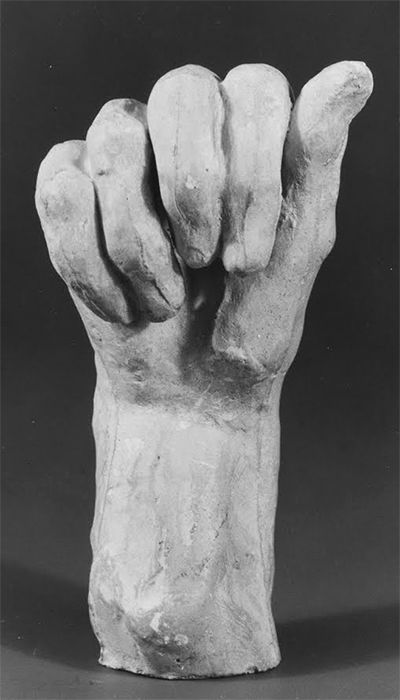Auguste Rodin would create studies of individual limbs and other parts of the body from time to time and in this case produced a model of a hand. This would become his favoured body part for sculpture, and he even used his own hand from time to time.
The model for the sculpture in front of us here is believed to have been made in around 1886–89, with the plaster cast now being found in the collection of the Metropolitan Musem of Art in New York City. One of the differences between sculpture and other mediums is how you will end up with several different items once the production process has been completed, with both the model itself as well as each sculpture that resulted from that. In some cases, Rodin sculptures were created even after his death, when models were used. These still retain a high value, because of their connection to his original work, but will not be as valuable as for when he was involved in the entire process. Something such as this, where we are witnessing the work of Rodin himself is far more interesting and rewarding and no doubt the Met will be taking excellent care of this plaster work.
The sculptor was well connected to his emotional side and also adored the beauty of the human body. It would become his main focus and although he tended to prefer female models, he also produced a large number of sculptures of men too. He sometimes even found himself romantically in tune with some of the more beautiful female sculptures that he produced, partly because of the amount of time that he would spend with the models themselves as well as how he fine tuned each sculpture over an extended period. By the end he would saw the model within the sculpture itself and this helped him to produce such good work. It also made him entirely single minded and not entirely easy to work with for his assistants, such was his desire for the unachieveable perfection.
Whilst studying classical sculpture with a great passion and interest, Rodin can be considered an entirely contemporary artist who focused on the human body throughout his career. He would produce large numbers of drawings and paintings but these were often intended as an aid to his main concern rather than displaying a desire to take his career into a whole new direction. He would also instruct photographers to come in and document his work in a visual way that offered something different to what he was doing himself. His models would also pose for hours as he tried to find quite the right look, but it would often take a long time before he could decide on his next project.




